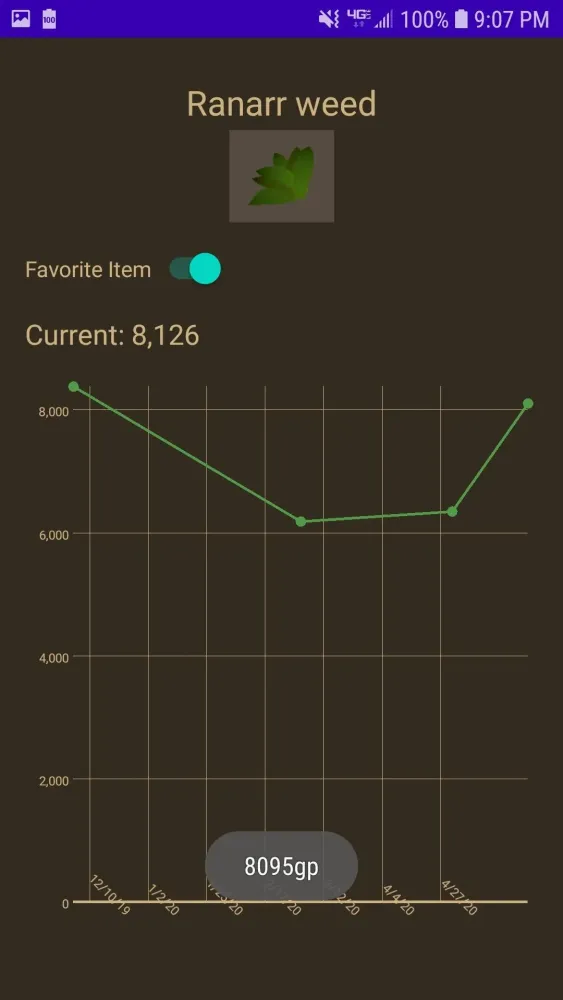Your cart is empty
Mastering Dynamite OSRS GE Tracker for Profitable Trading

Old School RuneScape (OSRS) thrives on its vibrant economy, and the Grand Exchange (GE) is the beating heart of it. Among the many items traded, dynamite stands out as a niche yet intriguing commodity, especially for players engaged in Blast Mining. Using tools like GE Tracker can transform your trading game, helping you maximize profits while minimizing risks. In this guide, we’ll dive deep into how dynamite interacts with the OSRS GE Tracker, offering insights, strategies, and tips to make the most of this explosive item.
Dynamite is a key item in OSRS, primarily used in the Blast Mining minigame in Lovakengj. It’s not just a tool for miners—it’s a tradable item with fluctuating prices that savvy players can capitalize on. Whether you’re flipping, investing, or simply curious, understanding dynamite’s role is the first step to mastering its market.
What Is Dynamite Used For?
Dynamite powers Blast Mining, where players use it to blow up rocks for ores, gaining Mining and Firemaking experience. Crafting dynamite requires volcanic sulphur, juniper charcoal, saltpetre, a pot, and a ball of wool, or you can buy it directly from Thirus for 575 coins each. Its demand stems from players grinding Mining levels or chasing high-value ores, making it a steady trade item.
Why Track Dynamite Prices?
Price volatility is common in OSRS, and dynamite is no exception. Factors like updates to Mining, changes in Blast Mining mechanics, or shifts in player activity can spike or drop its value. Tools like GE Tracker provide real-time data to help you spot trends, ensuring you buy low and sell high.
Getting Started with GE Tracker for Dynamite
GE Tracker is a powerhouse for OSRS traders, offering detailed price graphs, profit margins, and flipping tools. For dynamite, it’s your go-to resource to monitor price movements and make informed decisions. Let’s break down how to use it effectively.
Setting Up Your GE Tracker Account
To fully leverage GE Tracker, sign up for a free account or opt for the premium version for extra features like advanced alerts. Once registered, search for “Dynamite” in the item database to access its live price graph and stats. Premium users get a 2-day trial to explore tools like the flip finder, which can highlight dynamite’s profit potential. Note: Always verify prices in-game, as third-party tools may lag slightly.
Navigating the Dynamite Price Graph
The price graph on GE Tracker shows dynamite’s historical and current trends. Look for:
- Daily fluctuations: Small dips can signal buying opportunities.
- Weekly trends: Broader patterns reveal if demand is rising.
- Volume spikes: High trade volume often means stable flipping margins.
Use the graph to decide when to enter or exit the market, avoiding overpaying during hype cycles.
Strategies for Trading Dynamite
Trading dynamite isn’t just about watching numbers—it’s about strategy. Whether you’re a beginner or a seasoned flipper, these approaches can boost your GP.
Flipping Dynamite for Quick Profits
Flipping involves buying dynamite at a low price and selling it higher within the GE’s four-hour buy limit (13,000 units for dynamite). GE Tracker’s margin tool shows the current spread between buy and sell prices. For example, if dynamite buys at 200 coins and sells at 220 coins, you could earn 260,000 GP per cycle (13,000 x 20 coins), minus the 1% GE tax. Pro tip: Flip during peak player hours for faster trades.
Long-Term Investment in Dynamite
If you’re patient, consider holding dynamite for weeks or months. Monitor GE Tracker for signs of upcoming Mining updates or Kourend diary completions, which can boost demand. Buy in bulk during price dips and store dynamite in your bank until prices climb. This strategy requires more capital but can yield higher returns.
Crafting vs. Buying Dynamite
Should you craft dynamite or buy it on the GE? Crafting can save money if you gather materials yourself, but it’s time-intensive. GE Tracker helps compare costs:
| Method | Cost (GP) | Time | Best For |
|---|---|---|---|
| Crafting | ~150-180 (materials) | High | Skilling enthusiasts |
| Buying (GE) | ~200-250 | Low | Traders/flippers |
| Thirus | 575 | Low | Convenience |
Use GE Tracker to check material prices (e.g., saltpetre or wool) before crafting, ensuring it’s worth your effort.
Maximizing Profits with GE Tracker Features
GE Tracker’s advanced tools can give you an edge in the dynamite market. Here’s how to use them to stay ahead of the competition.
Price Alerts for Dynamite
Set custom alerts on GE Tracker to notify you when dynamite hits your target buy or sell price. This is crucial for flipping or snagging deals during sudden drops. For instance, if dynamite falls below 190 coins, an alert can prompt you to buy before prices rebound.
Profit Tracking and Analytics
GE Tracker’s profit tracker logs your dynamite trades, showing your total GP earned over time. Pair this with the personalized dashboard to monitor active transactions and favorite items. Analytics reveal your best flips, helping refine your strategy. Example: If you notice dynamite flips yield 10% more profit on weekends, adjust your trading schedule.
Integrating RuneLite with GE Tracker
RuneLite’s GE plugin syncs with GE Tracker, importing trades directly for real-time updates. This combo ensures you’re always working with the latest data, especially during volatile market shifts. Enable the plugin and link it to GE Tracker for seamless tracking.
Common Mistakes to Avoid When Trading Dynamite
Even with GE Tracker, trading dynamite has pitfalls. Avoid these errors to protect your bank.
Overbuying During Hype
When Blast Mining gets a buff or a new diary reward boosts dynamite demand, prices can soar. Don’t buy at peak hype—check GE Tracker’s historical data to confirm if the surge is temporary. Overbuying at 300 coins when the norm is 200 coins risks losses if prices crash.
Ignoring GE Tax
The 1% GE tax (capped at 5M per sale) eats into profits. For dynamite, a 20-coin margin per unit seems nice, but after tax, it’s closer to 19.8 coins. Use GE Tracker’s margin calculator to account for taxes before committing to a flip.
Neglecting Market Trends
Dynamite’s price ties to Mining trends and player behavior. If GE Tracker shows low trade volume, it might signal slow sales. Conversely, a volume spike could mean competition is heating up. Always cross-check trends before diving in.
Key Takeaways for Dynamite Trading:
- Use GE Tracker’s price graphs to time your buys and sells.
- Flip during high-volume periods for faster trades.
- Set alerts to catch price dips or surges.
- Compare crafting vs. buying costs to save GP.
- Avoid hype-driven purchases without data to back them up.
Trading dynamite on the OSRS Grand Exchange can be a goldmine if you wield GE Tracker wisely. From flipping for quick GP to investing for long-term gains, dynamite offers opportunities for all playstyles. Start small, experiment with GE Tracker’s tools, and watch your bank grow. Ready to light the fuse on your trading journey? Dive into the GE today and make dynamite your next big win.
